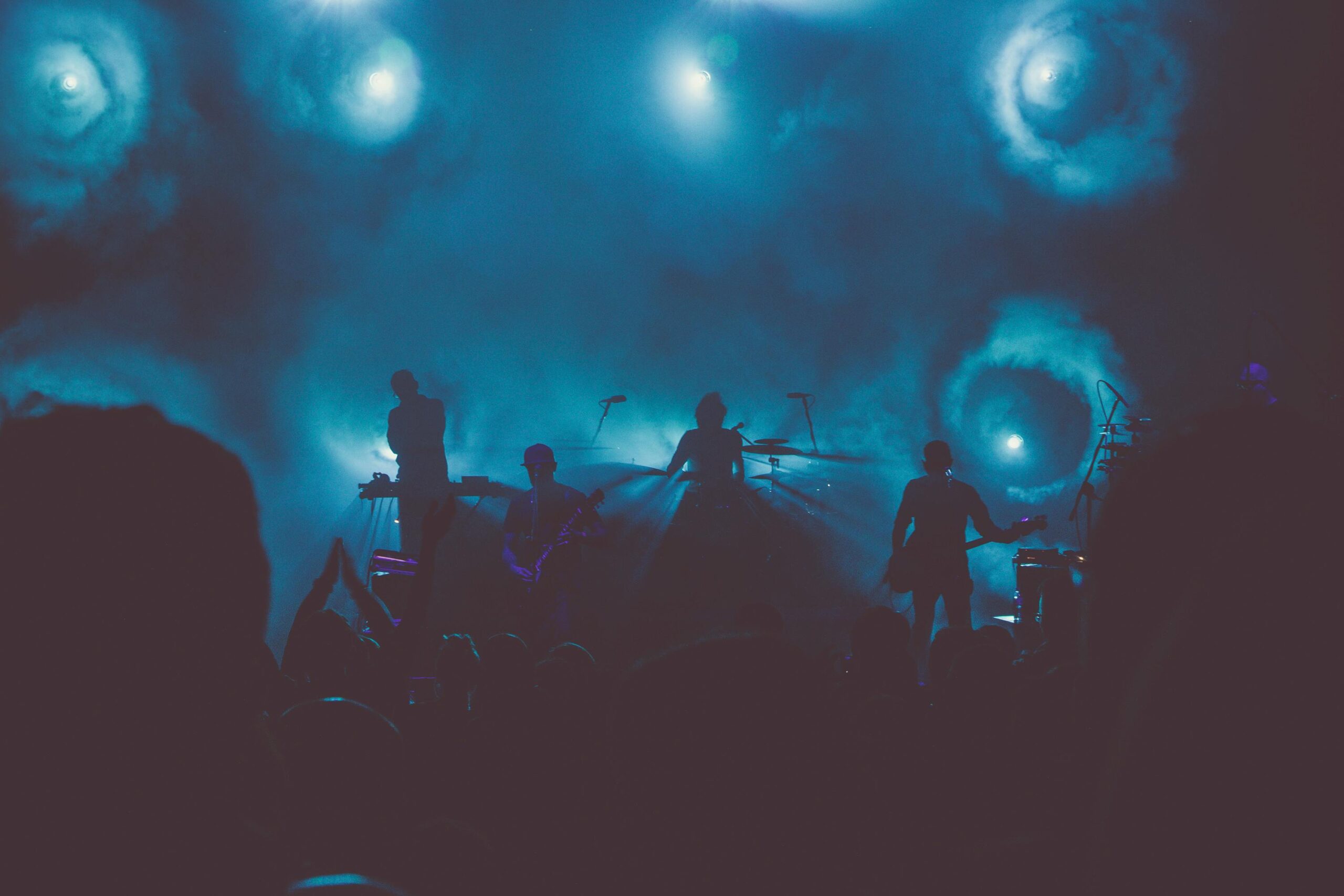In the digital age, artists have an unprecedented ability to share their work with a global audience. However, this opportunity comes with its own set of challenges. With the rise of streaming platforms and social media, many artists fixate on streams, likes, and follower counts—metrics that, while seemingly indicative of success, can be misleading and ultimately unfulfilling. Along with that we are encouraged to drive traffic to streaming services that, let’s face it, are selling your product for a spectacular profit and giving you next to nothing.
It’s time to shift the focus from these vanity metrics to something more valuable: genuine artist engagement.
The Illusion of Vanity Metrics
Vanity metrics are the numbers that look good on the surface but don’t necessarily correlate with real success or influence. Streams, likes, and follower counts are easy to measure and often used to gauge an artist’s popularity. However, these numbers can be deceptive. For instance, a high stream count might not translate to dedicated fans or meaningful revenue. Similarly, a large follower count doesn’t guarantee that those followers are actively engaging with your content.
These metrics can lead to a false sense of achievement and distract artists from what truly matters: building a loyal and engaged audience.
The Power of Engagement
Engagement is about creating a genuine connection with your audience. It’s the difference between a passive listener and an active supporter. When fans feel connected to you and your art, they are more likely to support you in meaningful ways, such as attending concerts, buying merchandise, or even sharing your work with others.
Here are a few reasons why focusing on engagement is crucial for long-term success:
- Building a Loyal Fanbase: Engaged fans will likely stick around for the long haul. They are the ones who will attend your shows, buy your albums, and support your crowdfunding campaigns. They see value in your art and are invested in your journey.
- Creating Meaningful Interactions: Engagement allows for two-way communication. It’s about having conversations with your audience, responding to their comments, and making them feel heard. This interaction fosters a sense of community and makes your fans feel like they are part of something bigger.
- Driving Authentic Growth: Authentic engagement leads to organic growth. When fans are genuinely excited about your work, they will share it with their networks, leading to more exposure and new fans. This type of growth is far more sustainable than any number of passive streams or likes.
- Enhancing Artistic Fulfillment: Knowing that your art resonates with people on a deeper level is incredibly fulfilling. Having a smaller, highly engaged audience is more rewarding than a large, indifferent one. Engagement brings a sense of purpose and validation that vanity metrics can’t provide.
Ideas to Boost Fan Engagement
- Share Your Story: Let your audience in on your journey. Share behind-the-scenes content, personal stories, and the inspiration behind your work. This transparency creates a deeper connection with your fans.
- Be Responsive: Make an effort to respond to comments, messages, and mentions. Acknowledge your fans and show appreciation for their support. This interaction can turn casual listeners into dedicated fans.
- Host Live Sessions: Live streaming allows for real-time interaction with your audience. Whether it’s a Q&A session, a live performance, or just a casual chat, live sessions make your fans feel valued and involved.
- Create Exclusive Content: Offer something special for your most dedicated fans. This could be early access to new music, exclusive behind-the-scenes footage, or special merchandise. Exclusivity makes your fans feel appreciated and part of an inner circle.
- Collaborate with Your Audience: Involve your fans in your creative process. This could be through fan art contests, collaborative projects, or simply asking for their input on upcoming releases. This level of involvement fosters a strong sense of community.
What Metrics Should You Consider?
When talking about fan engagement, artists should consider a variety of metrics that go beyond simple vanity metrics like streams and follower counts. These engagement metrics can provide deeper insights into how well an artist connects with their audience. Here are some key metrics to consider:
Comments and Replies
- Volume of Comments: The number of comments on social media posts, videos, or blog posts can indicate how much your content resonates with your audience.
- Quality of Comments: Look for comments that show thoughtful engagement, questions, or meaningful interactions rather than just generic praise.
Direct Messages and Emails
- Message Volume: The number of direct messages or emails you receive from fans can indicate how engaged your audience is.
- Response Rate: How quickly and effectively you respond to these messages can also be an engagement metric as it shows you are also engaged with your fans. Don’t leave a dude hanging.
Social Media Interactions
- Likes and Shares: While these are often seen as vanity metrics, they can still provide insight into how many people interact with your content. Just don’t make too much of a big deal about them. Shares are better than likes, and likes can be seen as ‘passive engagement’.
- Mentions and Tags: The number of times fans mention or tag you in their posts can show how much they are promoting and talking about your work. Encourage this!
- Story Views and Interactions: Metrics from Instagram Stories or Facebook Stories can indicate how engaged your audience is with transient content, but again, don’t read too much into it and don’t try to make something go viral or be disappointed because one message got more views than another. One fan seeing your heartfelt post on your latest song is better than a whole bunch seeing your cat dancing to Michael Jackson. Still, that would be pretty cool.
Engagement Rate
- Calculation: Engagement rate is often calculated as the total number of interactions (likes, comments, shares) divided by the total number of followers, multiplied by 100 to get a percentage. This gives you a sense of how actively your followers engage with your content. However, I would consider weighting these with likes as being more passive (maybe 100 likes = one interaction).
Event Attendance
- Live Event Participation: The number of attendees at your live events, both online (e.g., live streams) and offline (e.g., concerts, meet-and-greets), can be a strong indicator of engagement.
- Repeat Attendees: Fans who consistently attend multiple events indicate a deeper level of engagement. These are your true fans and in the early stages (and throughout your career) look after these people. They will become your evangelists.
Content Shares
- Social Shares: The number of times your content is shared on social media platforms by people other than your record label and your mum.
- Referral Traffic: The amount of traffic from shared links to your website or social media profiles can show how far-reaching your influence is.
Website Metrics
- Page Views and Session Duration: The number of visitors to your website and the time they spend there. If people are spending longer then that’s great. Imagine being able to see how long people stared at your record cover in the store before buying it in the old days.
- Bounce Rate: A lower bounce rate can indicate visitors find your content engaging and relevant – and that they want to stay there to learn more about you. Someone who stays longer is an engaged fan.
Newsletter Metrics
- Open Rates: The percentage of recipients who open your emails. You are sending emails, right?
- Click-Through Rates: The percentage of recipients clicking links within your emails.
- Subscription Growth: The rate at which your email list is growing.
Merchandise and Music Sales
- Sales Volume: The number of merchandise and music sales can directly reflect your fans’ engagement. With thousands of streams you can barely buy a cup of coffee, with a single download sale, you could buy many.
- Repeat Purchases: Fans who make multiple purchases over time are likely highly engaged. Treat them like royalty. Send them a personalised message.
Crowdfunding and Fan Funding
- Campaign Success: The support from crowdfunding campaigns or fan funding platforms like Patreon.
- Number of Supporters: The number of people willing to financially support your projects. Treat anyone who gives you their hard-earned pesos as royalty.
Fan Interaction on Streaming Platforms
- Playlist Adds: The number of times your songs are added to user playlists (not through playlisting services). If Sally from next door adds your song to her “breakup playlist #2” and puts that on repeat for the next two weeks, then you can take that to the bank.
- Listening Time: The average time fans spend listening to your tracks. Those who listen all the way through are engaged or, unfortunately, listening passively.
Community Engagement
- Fan Clubs and Groups: The activity level in any fan clubs or groups dedicated to your work. Have you set up your street team yet?
- Forum Participation: How often do fans discuss your work on forums or community platforms? Check Quora, Reddit or any online groups that may suit your music. Are you being mentioned? Set up a Google Alert for your artist name.
By focusing on these engagement metrics, artists can gain a more comprehensive understanding of their audience’s true level of interest and connection with their work. This information can help guide strategies for building stronger, more meaningful relationships with fans.
Engage!
In a world where numbers often overshadow actual artistic value, artists must prioritise engagement over vanity metrics. Genuine engagement builds a loyal fanbase and provides a more profound sense of fulfilment and purpose. By focusing on meaningful interactions and creating authentic connections, artists can ensure their work resonates and endures in the hearts of their audience. Remember, it’s not about how many people listen to your music but how many people genuinely hear it.




